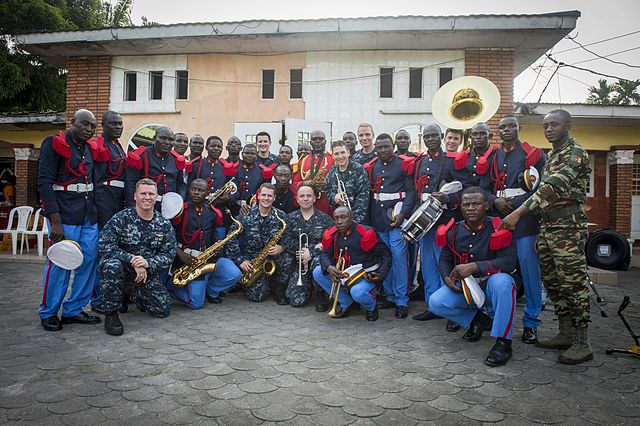A military band is a group of personnel that performs musical duties for military functions, usually for the armed forces. A typical military band consists mostly of wind and percussion instruments. The conductor of a band commonly bears the title of bandmaster or music director. Ottoman military bands are thought to be the oldest variety of military marching bands in the world, dating from the 13th century.
A massed group of military bands from several countries at the 2011 Berlin Military Tattoo
Depiction of the Ottoman military band in 1720. The notion of a military band originates from the Ottomans.
A Tajik military band with Karnays at a military tattoo at Zhurihe Training Base in China, 2014.
Cameroonian and American military band members in Douala, March 2015
Conducting is the art of directing a musical performance, such as an orchestral or choral concert. It has been defined as "the art of directing the simultaneous performance of several players or singers by the use of gesture." The primary duties of the conductor are to interpret the score in a way that reflects the specific indications in that score, set the tempo, ensure correct entries by ensemble members, and "shape" the phrasing where appropriate. Conductors communicate with their musicians primarily through hand gestures, usually with the aid of a baton, and may use other gestures or signals such as facial expression and eye contact. A conductor usually supplements their direction with verbal instructions to their musicians in rehearsal.
Herbert von Karajan conducting in 1941
Giuseppe Verdi conducting his opera Aida in 1881
Leonard Bernstein conducting the Royal Concertgebouw Orchestra in 1985
Conductor's score and batons on a lit, extra-large conductor's music stand








